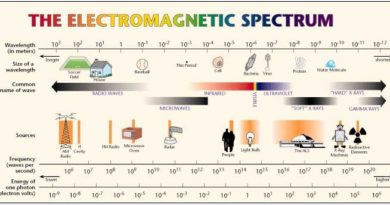Types of Antennas | Communication Systems
Types of Antennas
Antennas are broadly classified based on the following parameters:
- Wavelength (or frequency of operation)
- Frequency range of operation
- Shape of antenna
- Pattern produced by antenna
- Polarization of antenna
- Applications of antenna
Wavelength / frequency classification: Based on operating frequency of an antenna, they can be classified as:
- LF (Low Frequency)
- HF (High Frequency)
- MF (Medium Frequency)
- VHF (Very High Frequency)
- UHF (Ultra High Frequency)
- Microwave antennas
Note that different shaped antennas work better at different frequencies
Frequency range of operation: Some antennas are designed to operate over large frequency range and used over large range of frequencies. Examples are Narrow band antenna (frequency range of operation is very narrow), Broadband, Ultra wide band (wide frequency range of operation).
Shape classification: Depending on physical structure and shape of the antenna, they can be of following types:
- Wire antenna
- Loop antenna
- Helical antenna: structure is helix, so it is called helical antenna
- Aperture antenna: waveguide antennas are aperture antennas
- Lens antenna
- Planar Microstrip antenna: can be pasted on any type of surface
Pattern classification: Depending on radiation pattern, antennas can be of following types
- Omni-directional antenna
- Isotropic antenna
- Directional antenna
- Pencil beam antenna
For example, if the antenna is radiating uniformly in all directions, it is called isotropic antenna.
Polarization classification:
- Linearly polarised
- Circularly polarised
- Elliptically polarised
Application based classification:
- Cell phone antennas
- Mobile station antennas
- Biomedical antennas
- Satellite
- Radar
- Remote sensing
Antenna types by physical structure
A good antenna would radiate almost all the power delivered to it from transmitter in a desired direction. A receiver antenna does the reciprocal process and delivers power from a desired direction.
Antennas come in different shapes and sizes to suit different types of wireless applications. The shape and size of an antenna is a function of its purpose. The characteristics of an antenna are very much determined by its shape, size and the type of material that it is made of. Some of the commonly used antennas are:
Wire antennas
- Dipole, monopole, loop antenna, helix
- Usually used in personal applications, automobiles, buildings, ships, aircrafts and space crafts.
- Helical Antenna: It consists of a conducting wire wound in the form of helix as shown in figure.
